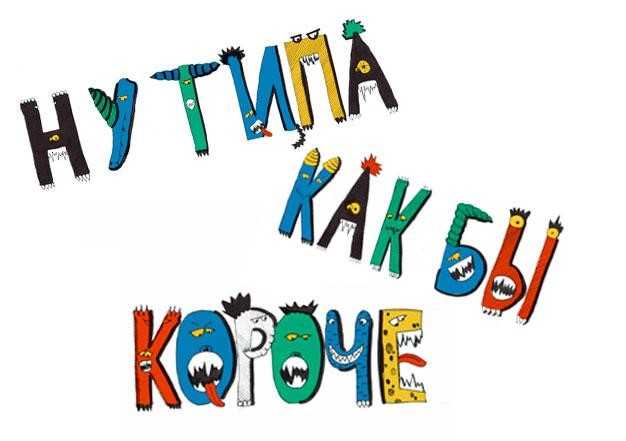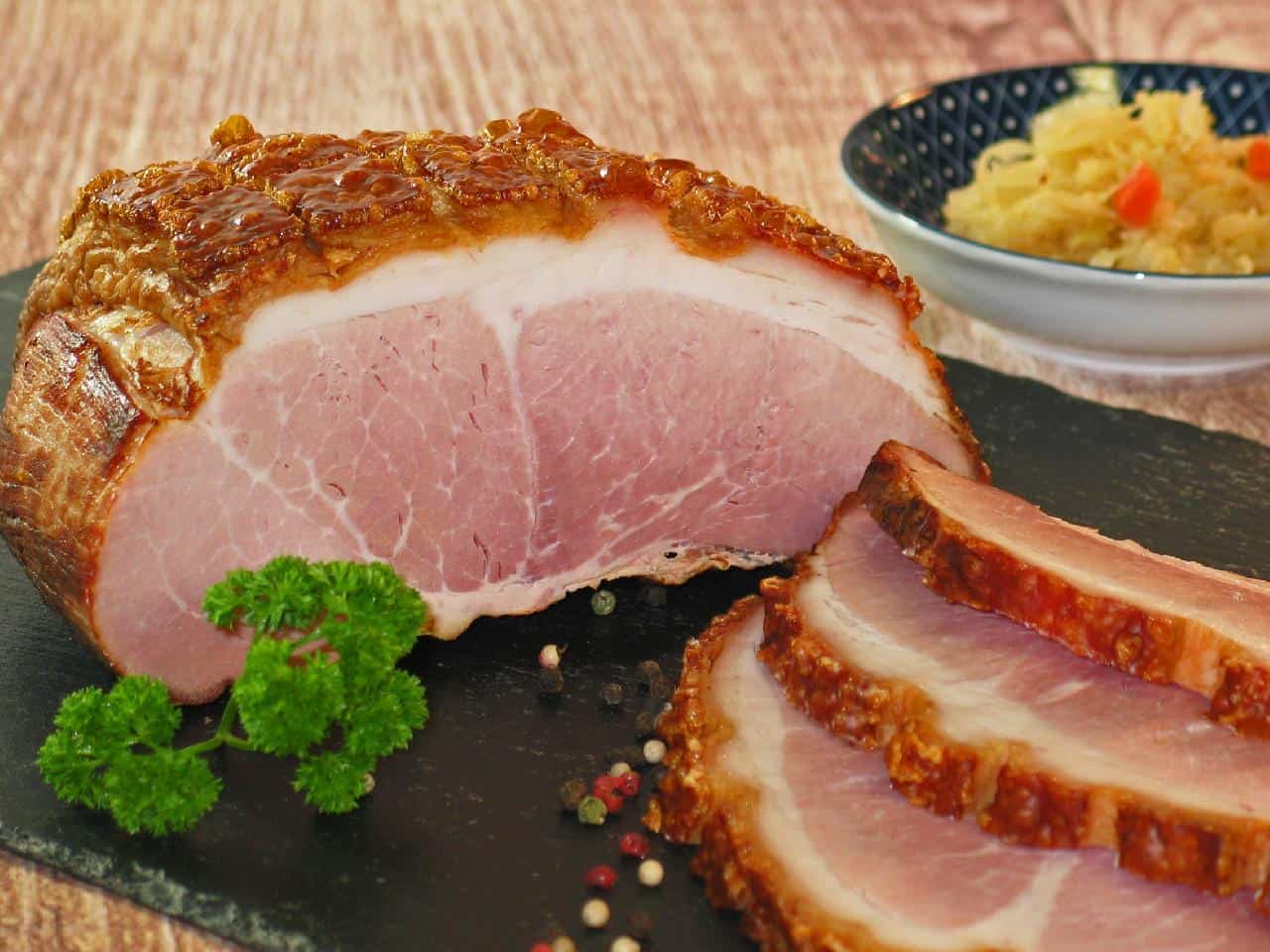«Безграмотность» в сети
В современных сетевых комментариях и постах можно встретить такие примеры искажения слов, как:
- штош (что ж)
- чоуж (что уж)
- неа (нет)
- низя (нельзя)
- ща (сейчас)
- походу (похоже)
- ваще (вообще)
- типо (просторечие — типа, вроде)
- че (что)
- лан (ладно)
- дык (так)
- капец (конец)
- штоль (что ли)
- ничоси (ничего себе)
- ненуачо (нет, ну а что такого?)
Кроме подобных орфографических вольностей, из комментариев и сообщений в мессенджерах постепенно исчезают запятые — часто даже из-за лени или простой торопливости пишущего. Письменная речь в соцсетях приобретает черты устной, с ее спонтанностью, уточнениями и сокращениями.
Пропадают и точки. В Нью-Йорке, в Бингемтонском университете, в 2015 году провели эксперимент, большинство участников которого указали, что считают точку в конце сообщения признаком неискренности, раздражения. Поэтому точки часто опускают совсем или заменяют круглой скобкой («улыбкой») или восклицательным знаком.
Польза и вред сарказма

По мнению исследователей из Гарвардского и Колумбийского университетов, сарказм развивает абстрактное мышление и креативность. Причем творческий интеллект развивается как у тех, кто использует сарказм, так и у тех, кто интерпретирует его. Правда, при этом сарказм становится почвой для конфликтов. Однако есть исключение: если насмехается близкий человек, то креативность развивается, а конфликты не возникают.
Еще одно интересное исследование провели ученые из Ноттингемского университета. Они выяснили, что критика, выраженная через сарказм, воспринимается менее негативно, чем прямая критика. Но комплименты, сказанные с сарказмом, воспринимаются хуже, чем прямые комплименты. Причем это отмечают как те, кто делал замечания и комплименты, так и те, кто их получал.
Сарказм имеет свои плюсы и минусы. Можно сказать, что в большом количестве, при частом и неуместном использовании от него больше вреда, чем пользы. Используйте его только в отношениях с теми людьми, с которыми вы хорошо знакомы, и кто спокойно воспринимает такой юмор
Важно уважать особенности, чувства, границы других людей
Layered Haircut
 Credit: @cymstyle
Credit: @cymstyle
On the complete opposite side of the spectrum is a layered haircut (although the two can be combined- more about that later.)
Layers are cut when the hair is elevated, which leaves the hair with several different lengths and a ton of texture. They can be short and blended through the whole head of hair, or there can be minimal layering towards the bottom of the hair.
The number of layers you get depends on what angle the hair is elevated at when cutting it. Ultimately, the sky’s the limit when it comes to the different types of layered haircuts; so many different looks can be created from one technique.
Credit: @shannelmariano
TIP: Telling your hairstylist that you want a certain number of layers really makes no sense. Instead, you should communicate how high you want your layers to start and whether you want a lot of layering or not.

Additionally, if you have naturally curly hair, discuss your options with your stylist. Layers on curly hair can be the perfect disaster if not done correctly.
Some Different Types of Layered Haircuts:
- Long Layers – This is when long hair is just layered towards the bottom, keeping the length and thickness throughout the bulk of the hair.
- Face Framing – Layers are cut around the face to frame it. Think “The Rachel” haircut, made popular by Jennifer Aniston in the ’90s.
- Ghost Layers – A method of adding movement and texture, while keeping the illusion of a one-length haircut.
- Choppy Layers – Shorter layers that don’t blend as well.
- Textured Layers – Layers that are cut to have jagged ends (not blunt). These will blend well and add movement to a hairstyle.
Примеры сарказма из повседневной жизни
Неизвестно, в каком году люди придумали сарказм, но он точно уже существовал во время Античности. Например, известно, что его использовал Аристотель. Некто обратился к философу с длинным рассказом. Когда рассказчик закончил, то спросил Аристотеля: «Я тебя не утомил?». На что философ ответил: «Нет, я не слушал».
Сейчас сарказм встречается на каждом шагу как в литературе и искусстве, так и в быту. Разберем несколько ситуаций-примеров.
Насмешка над собой

Сотрудник компании неудачно выступил с презентацией перед клиентами. Он говорит сам себе: «Молодец! Круто выступил. Сразу видно: не зря готовился 2 недели. И повышение недавно не просто так получил. Идеально справился. Лучше и быть не может». Так он вымещает злость на самого себя, пытается совладать со стрессом. Как отмечают исследователи клиники Майо, самоирония помогает справиться со стрессом, адаптироваться к ситуации. После высмеивания отношение к проблеме становится не таким серьезным. Уровень тревожности снижается — можно объективно подумать над решением ситуации.
Важно: самоирония не должна быть злой или обвиняющей. Ее задача — снизить уровень серьезности, а не высмеять самого себя
Сарказм в близких отношениях
Мама говорит дочери: «Отличное платье, если ты хотела всем показать, что поправилась на 10 кг». Здесь в переносном смысле используется только первая часть — мама подразумевает, что платье подобрано плохо, подчеркивает лишние (с ее точки зрения) килограммы. Вторая часть похожа на безоценочную констатацию факта, но все-таки между строк читается упрек в лишнем весе.
Сарказм на работе
Один коллега просит другого: «Поменяйся со мной, пожалуйста, сменами. Я обещал сестре, что Новый год мы проведем вместе. Она приезжает из другого города, мы не виделись уже несколько лет. Я не ожидал, что меня поставят работать». Коллега отвечает: «Ты не поверишь! Я как раз хотел попросить тебя о том же. Так хочу в Новый год работать. А то ж у меня своей семьи нет». Судя по всему, он не горит желанием меняться сменами, а между строк упрекает коллегу в эгоизме.
Случай в партнерских отношениях
Вместо того, чтобы прямо попросить партнера быть аккуратнее в быту и убирать за собой, жена иронизирует: «Что бы я без тебя делала! Ты заботишься обо мне, не даешь облениться. Прихожу с работы, а меня ждет немытая посуда, разбросанные вещи. Спасибо тебе!». Такое поведение не сделает партнера аккуратнее: скрытая агрессия все равно заставит его защищаться и отстаивать свое право на беспорядок. Более того, она ставит партнера в позицию ребенка, которого отчитывает родитель. В такой ситуации сложно договориться на равных.
Использование умных фраз при общении в особых случаях
В течение жизни человек вынужден общаться с разными людьми. Опыт дискуссии может быть как приятным, так и нет
Важно знать, как общаться в напряженной ситуации
Как интеллигентно ответить на хамство или оскорбление
Как правило, оскорбительные высказывания в адрес других — удел слабых, закомплексованных людей. Это следует понимать и не опускаться до подобного уровня общения. Лучше освоить техники, как ответить на хамство умными словами.
Получив неожиданный отпор, грубиян останется в проигрыше.
Существует несколько приемов, как культурно ответить человеку на оскорбление умными словами:
- Игнорирование. Человек может продемонстрировать обидчику свою эмоциональную стойкость и уравновешенность, проигнорировав, оставив без внимания его слова.
- Долгий проницательный взгляд. Нападчик будет сбит с толка, почувствует свою слабость и неумение вести конструктивный диалог без перехода на личности.
- Сильная успешная личность. Можно интерпретировать оскорбительные высказывания в свой адрес как лишний знак внимания.
- Самоирония. Согласиться с оскорблением и превратить негатив в позитив.
- Принцип бумеранга. Использовать обидные слова в адрес дебошира.
- Контрвопрос. Спокойно поинтересоваться, почему человек ведет себя подобным образом.
Опробовав вышеперечисленные способы на практике, узнав, как заткнуть рот человеку умными словами, можно комбинировать несколько методов сразу.
Как по-умному оскорбить человека без мата
Общение между людьми не всегда приносит положительные эмоции. Иногда приходится защищать собственные границы и отвечать на клевету и оскорбления.
Когда дело доходит до оскорблений, лучше ответить сильно, но без использования ненормативных слов и крика. Для этого нужно знать, как оскорбить человека без мата умными словами.
Интеллигентные умные слова для оскорбления:
- «У меня слишком мало времени, чтобы тратить его на ваши комплексы».
- «Удивите меня! Скажите уже что-нибудь умное».
- «Хочется надеяться, что вы не всегда настолько глупы, как сегодня».
- «Вы уже уходите? Почему же так неторопливо?»
Подобные умные слова для оскорбления могут работать гораздо мощнее, чем обычная брань.
Как обидеть или морально унизить мужчину
Для того чтобы защитить свою честь и доброе имя в ходе конфликтной ситуации, стоит освоить способы, как унизить мужчину морально умными словами.
Если унижения «удостоился» мужчина, стоит упомянуть его неприметную или неопрятную наружность, скромные физические данные, а еще лучше – невыдающиеся умственные способности и отсутствие такого качества, как самоирония. Мужчина наверняка проявит болезненную реакцию.
Поставить на место человека — значит преподать ему урок, обозначить границы, которые не стоит пересекать.
Как поставить на место женщину
В общении стоит использовать все богатство русского языка. Независимо от того, какая женщина продемонстрировала пример неприемлемого поведения: любимая девушка или властная коллега по работе — ей нужно сразу дать понять, что вы не станете это терпеть.
Есть действенные приемы:
- Сразу высказать в ответ свое несогласие с грубым поведением. Нужно попытаться сделать так, чтобы обидчица почувствовала свою вину.
- Если женщина осталась недовольна поведением собеседника, нужно отыскать в своем монологе положительные моменты и сказать о них вслух. Данный прием вызовет у нее растерянность.
- Если женщина высказывает недовольство по поводу недостаточно хорошо выполненной работы, следует попросить ее сделать дело лучше или хотя бы дать стоящий совет. Скорее всего, критика прекратится.
- Достойным ответом на колкое замечание может стать молчание с оттенком презрения, выразительный взгляд и решительный отказ от продолжения деструктивного диалога.
- Каждая женщина хочет быть красивой, нравиться окружающим. В момент всплеска негативных эмоций стоит сказать собеседнице, что злость не добавляет ей привлекательности.
Знание приемов того, как поставить на место женщину умными словами поможет избежать серьезной ссоры и выйти из конфликта победителем.
Как отшить человека, не обижая его
Иногда повышенное внимание со стороны другого человека может быть неприятным и неуместным
Для того, чтобы не обидеть и не унизить его, важно знать, как отшить человека умными словами
Нужно честно и открыто поговорить при личной встрече, заранее продумав свою речь. Сообщить собеседнику о своей неготовности к общению. Затем стоит отметить сильную черту человека – его старания. Реакция может быть различной, в зависимости от темперамента и степени его чувств. В любом случае, нужно терпеливо все выслушать. Если он продолжит «наседать» следует выдать решительное и бесповоротное «нет».
Clipper Cuts
As I previously mentioned, clipper cuts are much different than standard scissor cuts. One unique aspect of using clippers is that they allow the option of extremely short hair.
 Credit: @oraginique
Credit: @oraginique
A buzz cut is when the whole head has been shaved to a uniformly short length.
Fade
 Credit: @welliton_barber
Credit: @welliton_barber
A fade haircut means that shorter hair “fades” into longer hair. Typically, the sides and back of the haircut will be skin-short and blended into a longer top (of various lengths).
However, the sides can be a bit longer (like 1/4 inch or so) as long as it still blends into longer hair on top. The blend should be seamless, with no line at all.
Crew Cut
 Credit: @cutterpillar75
Credit: @cutterpillar75
There’s a lot of misconception as to what a crew cut actually is; many people ask for one when they really want a buzz cut or fade.
A true crew cut is short all over, but the front “bang” area, is longer and combed straight up to be uniform with the top of the head.
Remington HC4250 Shortcut Pro Self-Haircut Kit, Beard Trimmer, Hair Clippers for…
- 9 Length Combs Cuts 1/16 — 5/8 inches(15 to 15 millimeter) to achieve the exact look you…
- Lithium; Rechargeable Battery 40 minutes of cordless runtime. The Shortcut Pro Hair…
- 13 Piece Kit Includes: Hand held clipper; 9 Length adjusting combs; cleaning brush;…
How to Dice
The dice is a knife cut that creates small, uniform pieces. Although it requires a bit more precision and practice, diced ingredients lend themselves well to toppings, sidings, or to part of a larger dish.
For instance, diced tomatoes are a staple in the classic bruschetta, diced fruit is used in chutney, and diced potatoes are perfect in a hearty beef stew.
Taking the extra time and effort to dice ingredients is worth it — it ensures that the dish cooks evenly and the final plating looks much more professional. To begin dicing, have a stable cutting board and a sharp knife. A chef’s knife or santoku are good for dense ingredients (think root crops), while a serrated knife is better for soft or thin-skinned produce (like tomatoes).
Most ingredients start with an irregular, organic shape. To get them into equal pieces, it helps to first cut the ingredient into a manageable shape. Take an onion, for example. Start dicing an onion by positioning it on a stable cutting board and using a sharp knife to slice off the stem end.
Next, cut the entire bulb completely in half. Take one half, peel the skin, and lay it with the flat cut side down. With your knife parallel to the cutting board, slice laterally into the onion two or three times at the desired dice size (3/4 inch, 1/2 inch, or 1/4 inch). Slice just until you reach the root end of the onion without cutting the entire length. Leaving the root end for last will help you avoid a messy pile of chopped onion and make the dicing process faster.
Then with the onion half still intact, slice vertically from the top to the bottom, at the same intervals. Rotate the half an onion 90 degrees, and again slice across the vertical cuts you just made until you reach the root end. This should leave you with a nice pile of diced onions and a root you can easily discard. Repeat for the other onion half.
In most other cases, dicing can be done easily by “squaring off” the ingredient. Cut off all round or uneven sides to form a rectangular or straight-edged shape. Then proceed to dice the ingredients to the desired size.
The smaller the dice, the quicker the ingredient cooks. Just take care when throwing them into a hot pan, as small dices also tend to release more liquid and may cause the oil to spatter.
Готовка chop
Что такое chop
Chop — это кулинарное блюдо, которое приготавливается из свежей свиная ребрышек. Ребрышки нарезаются на кусочки, отделяя мясо от костей. Готовое блюдо получается сочным, ароматным и очень вкусным. Chop прекрасно сочетается со сладкими и острыми соусами.
Процесс приготовления chop
Перед приготовлением необходимо тщательно обработать свиную ребрышку, убрав излишки жира и кости. Далее необходимо нарезать ребрышку на порционные куски, примерно одинакового размера. После этого мясо обрабатывается специальным маринадом, состоящим из различных специй. Маринад лучше готовить заранее и охладить перед обработкой мяса. Далее кусочки мяса обжариваются на сковороде или на гриле до золотистой корочки.
Как подать и сочетания
Готовое блюдо подают зеленым луком и соусом на выбор. Chop прекрасно сочетается с картофелем фри, тушеным овощами и салатами из свежих овощей. Замечательно подходит для ужина в кругу семьи или в качестве закуски на вечеринке.
Виды слов-паразитов
«Типа», «короче», «как бы», «ну» — слова-паразиты, которые мы слышим каждый день. Но в качестве речевого мусора могут выступать и существительные, и даже целые словосочетания: «правда», «на самом деле» и другие. Хоть дискурсивные слова и являются бессмысленными, некоторые лингвисты отмечают, что такие слова нам необходимы, чтобы обеспечить связность и выстроить дискурс — процесс речевой деятельности. Кроме того, зачастую слова-паразиты нужны для передачи оттенка значения. К примеру, частица «ну» подчёркивает сомнение или неуверенность, а «типа» — неопределённость. Дискурсивы нередко оживляют речь, придавая ей выразительность. В этом смысле слова-паразиты даже полезны. Но стоит помнить, что это касается только разговорной речи, в тех случаях, когда дискурсивы употребляются в ограниченном количестве. Если же использовать такие слова постоянно и не к месту, могут возникнуть проблемы. Самый яркий пример — междометие «блин», которое некоторые используют чуть ли не через каждое слово. Здесь также можно упомянуть и похожие нецензурные варианты — вы наверняка уже догадались какие.
Словами-паразитами являются и контактные слова, которыми мы часто привлекаем внимание собеседника: «слушай», «знаешь», «понимаешь». В современном мире некоторые лингвисты выделяют отдельную категорию речевых паразитов — шаблоны и клише
Такими словами часто грешат те, кто составляет почтовые рассылки, спецпредложения и рекламные тексты: «высокое качество», «широкий ассортимент», «уникальное предложение», «в кратчайшие сроки», «эксклюзивный», «востребованный», «данный». В разговорной речи такие слова не встречаются, поэтому избавиться от них будет просто.

What is pork loin?
The pork loin is a cut from a pig that is created from tissue along the dorsal side of the rib cage and it’s very lean. This cut is wider and thicker with a fat layer on top called a fat cap.
Its color is lighter than the pork tenderloin and it has a mild flavor. Usually, a pork loin weighs between 1 and 2 kilos. This pork cut is also known as pork loin roast.

How to cook pork loin?
If you want to make a delicious pork loin, follow these steps to create the perfect meal:
- Seasoning is very important when you are cooking meat, so try combining salt, pepper, paprika, thyme, garlic powder or onion powder, some rosemary and rub it all around the pork loin.
- Heat some oil in a skillet and try to sear the meat for about 5 minutes on each side.
- After this, remove the set pork and put it on a foil-lined baking sheet.
- Another option is to add honey, mustard, soy sauce, and olive oil, which will make the meat more juicy and tender.
- Put in the oven and roast the meat for 25 minutes in a heated oven of 190-celsius degrees.
- Once the meat is well-prepared and cooked, take it out of the oven and leave it for 10 minutes to rest. This way the juices will soak into the meat.
- The final step is to cut and serve the meat.
Other recipes:
The previous steps are just one way of cooking the pork loin. This cut can be cooked in many ways that will make the meat tender and delicious. Here are some recipes:
- If you are cooking skinless and boneless pork loin, you need a good sauce to marinate the meat in. So, a good sauce is the Honey garlic butter sauce. This way you’ll make the perfect meal for any occasion.
- Another recipe is the classic roast pork with delicious crackling, perfect for a Sunday lunch with your family. Top it with tasty apples and cider gravy.
- Post-roast loin pork with celeriac, shallots, and pancetta, another recipe for a chunky and comforting meal on a Sunday.
Context Matters
When it comes to cooking meat, the choice between chop and cutlet can depend on the context in which they are used. While both cuts come from the same animal, they have distinct differences that make them better suited for certain cooking methods and occasions.
Formal Dinner Party
If you’re hosting a formal dinner party, cutlets are the way to go. Cutlets are thinly sliced pieces of meat that are often breaded and pan-fried or grilled. They are elegant and easy to eat with a knife and fork, making them the perfect choice for a fancy occasion.
Casual Family Dinner
If you’re cooking for your family on a weeknight, a chop might be a better option. Chops are thicker cuts of meat that can be grilled, broiled, or roasted. They are hearty and satisfying, making them a great choice for a casual meal.
Barbecue or Picnic
For a barbecue or picnic, chops are the way to go. They are easy to grill or smoke and can be served with a variety of sides. Cutlets, on the other hand, might be more difficult to cook on a grill or may not hold up as well in a picnic setting.
Special Occasion
If you’re cooking for a special occasion, such as a holiday or anniversary, both chops and cutlets can work well. It really depends on your personal preference and the type of dish you want to create. For example, a rack of lamb can be served as chops or cutlets, depending on how you want to present it.
As you can see, the choice between chop and cutlet can depend on a variety of factors, including the occasion, cooking method, and personal preference. By understanding the differences between these two cuts of meat, you can make an informed decision and create a delicious and satisfying dish that everyone will enjoy.
Final Thoughts

With so many different types of haircuts available, it’s good to know how to differentiate between them all so you can communicate what you want to your hairstylist.
Blunt hair is cut straight across, whereas layered hair is cut at an elevated angle to add movement to the style. Clipper cuts are typically pretty short, but many different men’s hairstyles can be achieved with the use of clippers and/or scissors.
No matter what type of haircut you’re into, a good haircut can make or break your entire style, so it’s important to get exactly what you want.
Hope this helps!
Until next time,

YOUR TURN: What’s your favorite type of haircut? I want to know what you think in the comments section
RELATED:
- The 5 Essential Hair Cutting Tools and Tips on How to Use Them
- The 9 Sexiest Hairstylist for Men With Receding Hairlines
- The Top 11 Medium-Length Hairstyles of 2019
- The Difference Between and A-Line, Graduated Bob and Other Different Types of Bobs
Last update on 2023-10-22 / Affiliate links / Images from Amazon Product Advertising API
Details
may be a numeric vector, or more generally, any vector which can be
compared with and (see Ops). In particular Date
and date-time objects are supported. Character vectors
are supported with a warning.
Breaks
may be a vector or a function.
If it is a vector, gives the break endpoints. Repeated values create
singleton intervals. For example creates 3
intervals: , and .
If is a function, it is called with the , , and
arguments, and should return an object of class .
Use functions to create a variety of data-dependent breaks.
Names of may be used for labels. See «Labels» below.
Options for breaks
By default, left-closed intervals are created. If is ,
right-closed intervals are created.
If is the final break (or first break if is )
will be closed at both ends. This guarantees that all values with
are included in the intervals.
Before version 0.9.0, was by default, and also behaved
differently with respect to extended breaks: see «Extending intervals» below.
Using mathematical set notation:
-
If is and is , breaks will look like
. -
If is and is , breaks will look like
. -
If is and is , all breaks will look like
. -
If is and is , all breaks will look like
.
Extending intervals
If is , intervals will be extended to and .
If is (the default), intervals will be extended to
and , only if
necessary — i.e. if elements of would be below or above the unextended
breaks.
is applied after breaks are extended, i.e. always to the very last
or very first break. This is a change from
previous behaviour. Up to version 0.8.0, was applied to the
user-specified intervals, then was applied. Note that
if breaks are extended, then the extended break is always closed anyway.
Labels
may be a character vector. It should have the same length as the
(possibly extended) number of intervals. Alternatively, may be a
function such as .
If is a named vector, then non-zero-length names of will be
used as labels for the interval starting at the corresponding element. This
overrides the argument (but unnamed breaks will still use ).
This feature is .
If is , then integer codes will be returned instead of a
factor.
If is , labels will show the actual numbers calculated by breaks.
If is then labels may show other objects, such
as quantiles for and friends, proportions of the range for
, or standard deviations for .
If is then functions will use their default (usually
). Otherwise, argument to overrides arguments
passed into functions directly.
Что такое вопросы, наводящие мосты
Когда я договариваюсь с кем-то об интервью, как правило, люди приходят ко мне с готовностью. Они хотят обратиться к миру и поделиться своими мыслями или опытом.
Но что делать в ситуациях, когда человек сам не желает взаимодействовать с вами? Чтобы достучаться до скрытного человека, требуется особый подход, много терпения и специальные вопросы, помогающие наладить отношения.
Допустим, вам нужно что-то выяснить. Зачем по офису болтается этот новый парень? И не планирует ли ваш сын-подросток устроить вечеринку, когда вы уедете из города? Такие разговоры иногда похожи на изощренный танец вокруг интересующей вас темы. Ваши шансы достигнуть цели будут выше, если вы зададите правильные вопросы — и тем самым наведете мосты.
Вам нужно знать:
- Что происходит?
- О чем думает ваш собеседник?
- Есть ли у вас какие-то противоречия?
У людей много причин быть замкнутыми. Они могут что-то скрывать или чего-то стыдиться. С подозрением относиться к вам из-за ваших взглядов или из-за чего-то, что происходило между вами в прошлом. Сердиться, обижаться или считать, что весь мир против них. Они могут быть скрытны по натуре. А некоторые просто замышляют что-то недоброе.
Вопросы, наводящие мосты, должны подталкивать людей к общению, даже если они изначально этого не хотят. Принципы построения вопросов-мостов направлены на однозначный результат: заставить раскрыться не доверяющего вам человека.
Ваши шансы на успех возрастут, если вы будете соблюдать следующие условия.
- Твердо знайте, чего добиваетесь. Четко сформулируйте для себя, что хотите узнать. Не теряйте из виду цель.
- Избегайте «тревожных кнопок». Не начинайте с обвинений или вопросов, которые сразу заставляют защищаться. Лучше просто пытайтесь завязать диалог.
- Не обвиняйте, а спрашивайте. Начните с того, что беспокоит собеседника, и попытайтесь что-то об этом выяснить. Что кажется ему несправедливым? Затем спросите о причинах и мотивах его действий.
- Демонстрируйте понимание и поддержку. Вы хотите получить откровенные ответы и понять подоплеку чужих поступков, поэтому должны подталкивать человека к дискуссии. Направляйте его и поддерживайте. Предлагайте награду. Для вас главное — разговорить собеседника.

Chop vs. Dice vs. Mince: Understanding the Differences
If you’re new to cooking, you may be confused by the various terms used to describe cutting techniques.
One of the most common is “chopping,” but what does it actually mean?
In this section, we’ll explain the differences between chopping, dicing, and mincing, and provide tips for mastering each technique.
What is the difference between chopping, dicing, and mincing?
Chopping, dicing, and mincing are all techniques used to cut food into smaller pieces, but they differ in size and shape.
Chopping involves cutting food into irregular pieces, while dicing involves cutting food into uniform cubes.
Mincing involves cutting food into very small pieces, often using a sharp knife or food processor.
The technique you use will depend on the recipe and the desired texture of the final dish.
When should you use each technique?
Most of the time a recipe calls for a certain size to keep the cooking time or flavour consistent.
For example, if you chop an onion when the recipe calls for a dice, chances are the onion will not cook as the recipe intended.
Some recipes may even specify an ingredient be roughly chopped or finely chopped.
A rough or coarse chop means larger chunks of about 20mm/¾ inch, while a fine chop is much smaller at 7mm/¼ inch.
If not stated in the recipe, chopped ingredients can be anywhere from 13mm/½ inch to 20 mm/¾ inch pieces.
The technique you use will depend on the recipe and the desired texture of the final dish.
-
Chopping;
Chopping yields one of the largest size pieces and is used in many recipes.It’s a good cut to use when making dishes that cook awhile, like stews, soups, and stocks.
Chopping is also great for adding texture and variety to dishes like salads or stir-fries. -
Dicing;
Dicing is more uniform than chopping.
The size is also somewhat smaller. Imagine the diameter of a pea (but squared).Dicing is usually called for in a recipe where an ingredient is to be sautéed for short periods of time or eaten raw, as in salsa.
It is also perfect for recipes that require uniform pieces, like soups or stews. -
Mincing;
Mincing is the smallest chop.
The texture of minced food is fine and uniform, with no large chunks or uneven pieces.This technique is often used for ingredients like garlic, onions, and herbs in recipes where a smooth texture is desired.
Mincing is also ideal for recipes that require a finer texture, like sauces or dips.
It’s important to note that the size of the food you’re cutting will also impact which technique you use.
For example, if you’re working with a large onion, you may want to chop it into smaller pieces before dicing it.
Tips for mastering each technique.
To master chopping, make sure your knife is sharp and use a rocking motion to cut through the food.
For dicing, start by cutting the food into slices, then stack the slices and cut them into even cubes.
To mince, start by finely chopping the food, then use a back-and-forth motion with the knife to create a finer texture.
Practice makes perfect, so don’t be afraid to experiment and try different techniques to find what works best for you.
How to choose the right knife for the job.
Choosing the right knife for the job is crucial when it comes to chopping, dicing, and mincing.
A chef’s knife is a versatile option that can handle all three tasks, but for more precise work, a paring knife or utility knife may be better suited.
It’s also important to make sure your knife is sharp, as a dull knife can be dangerous and make the task more difficult.
Consider investing in a sharpening tool or taking your knives to a professional for sharpening.
Common mistakes to avoid when chopping, dicing, or mincing.
One of the most common mistakes people make when chopping, dicing, or mincing is not using a sharp enough knife.
A dull knife can slip and cause injury, as well as make the task more difficult and time-consuming.
Another mistake is not using the proper technique for each task.
For example, when dicing, it’s important to make sure all the pieces are uniform in size to ensure even cooking.
Finally, not taking the time to properly prep ingredients before chopping, dicing, or mincing can lead to uneven pieces and a less-than-perfect end result.
Technique Tuesday – Saute, Chop, Cut In
Posted January 28, 2020
in Culinary Arts
Most cooking enthusiasts are acquainted with, if only by name, various kitchen, cooking or baking terms but may not really understand what they mean and how they affect a dish’s aroma, taste and texture. This blog is the first in a series that will help illustrate different kitchen techniques and methods. Some that may be familiar and others that are new.
Auguste Escoffier School of Culinary Arts Home Gourmet understands that not everyone desires to or is able to become a chef, but we want to provide our home cooks with the capacity to improve their cooking skills with knowledge that promotes confidence and pride in the kitchen. Our partnership with America’s Test Kitchen is the perfect union for doing just that. As two of the industry’s leading sources for online culinary training, each organization prides itself on its commitment to helping today’s cooking enthusiasts meet their greatest potential, whether they’re advanced in their craft or just starting out.
So join us for ‘Technique Tuesdays’ as we feature three terms defining, explaining and providing examples of how each are used. You never know what you can accomplish in the kitchen with this additional education.
Sauté
Appropriately enough for Escoffier, the word ‘sauté’ is a French. It means jump or bounce in reference to tossing while cooking. Sauté is a method of cooking that uses a small amount of fat in a shallow pan over relatively high heat.
To sauté ingredients they need to be cut into pieces or thinly sliced to facilitate rapid cooking. Perfect for sautéing are tender meat items such as beef tenderloin, chicken breast, fish, etc., and most any vegetable. With meat you may employ a finishing process called deglazing. This is the scraping of the bottom of the pan while adding a liquid to make a complementary sauce. (More on deglazing in a future blog).
To learn more about sautéing, check out our online cooking class Secrets to Sautéing.
Chop
When you ‘chop’ a food item you are usually preparing it as an ingredient to a dish. There are different types of chops, or cuts, that produce various shapes. A few such cuts are julienne-perfect for stir-fries, soups and garnishes; brunoise-great for sauces, this is a small dice cut easily produced after you julienne; and mince-an even smaller cut than brunoise when the ingredient is used mainly for overall taste and not texture. When chopping any ingredient it’s important to maintain shape and size so that all cook evenly and at the same time as it does affect the flavor, aroma and texture of a dish.
Our Best Beef Stew online cooking course incorporates a few different types of cuts, or chops, and is a great course to practice this technique.
Cut In
You may be familiar with the term ‘cutting in’, in reference to butter within a pastry recipe. “Cutting in” means incorporating the butter into the flour in such a way that little lumps of raw butter remain whole within the flour mixture. However, many home cooks and professional pastry chefs alike know that you can use your hands to cut in. But did you know that you can also use a food processor? The reason that a food processor does work for cutting in butter is because you want the butter to stay ice cold and well, the longer you have your warm hands in the mixture the more the butter softens.
Consider our online cooking class, How to Make Foolproof Pie Dough, to practice your ‘cutting in’ technique.
Check back in with us as we continue with our Technique Tuesday blog series where we will highlight different types of kitchen techniques and cooking methods. Next up is Roast, Beat and Fold.






























